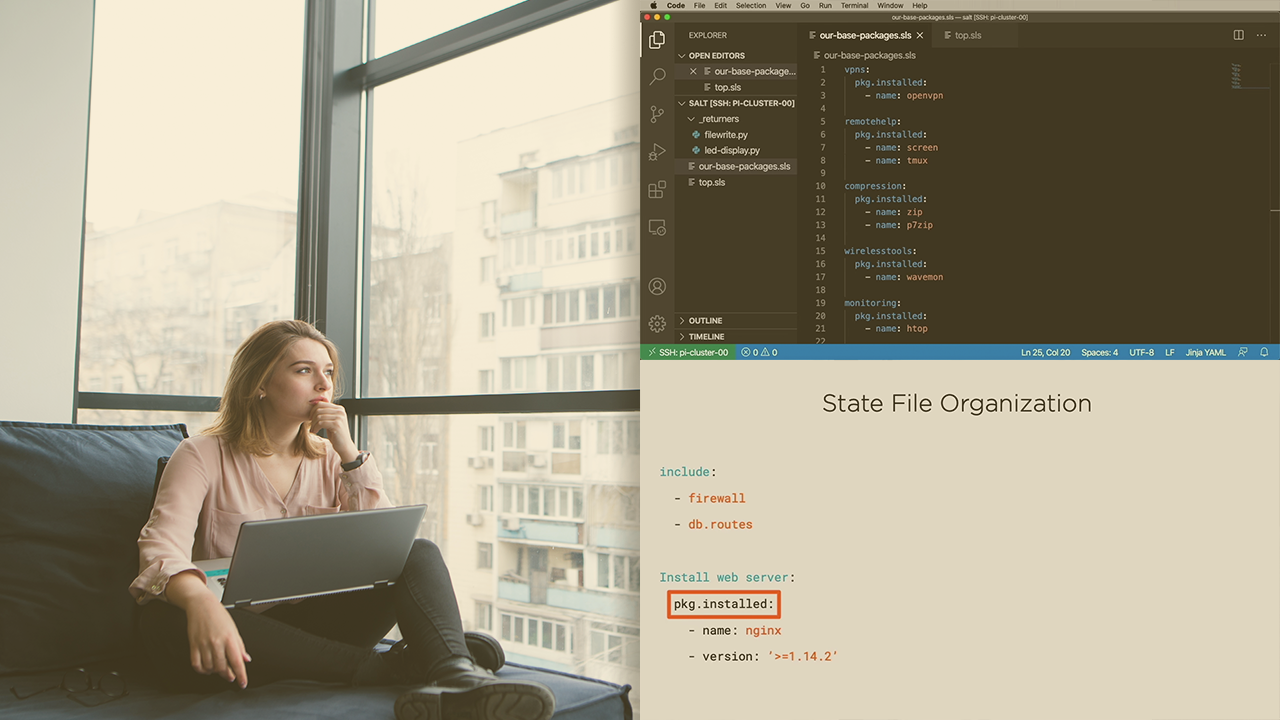- Course
Getting Started with Salt Open
This course will teach you how to automate the configuration of your IT infrastructure, network security, and servers, both virtual and physical, with Saltstack Open.

- Course
Getting Started with Salt Open
This course will teach you how to automate the configuration of your IT infrastructure, network security, and servers, both virtual and physical, with Saltstack Open.
Get started today
Access this course and other top-rated tech content with one of our business plans.
Try this course for free
Access this course and other top-rated tech content with one of our individual plans.
This course is included in the libraries shown below:
- Core Tech
What you'll learn
Tedious tasks in scaling up architecture can quickly become overwhelming. In this course, Getting Started with Salt Open, you’ll learn to automate IT systems to enable faster scaling, improve security, and speed up deployment of new services. First, you’ll explore the Salt Master/Minion architecture and how to run commands remotely and securely from the Master. Next, you’ll discover how to automate software installation and maintenance. Finally, you’ll learn how to automate the results of your automation by capturing results in a redis database. When you’re finished with this course, you’ll have the skills and knowledge of Saltstack Open needed to streamline formerly repetitive and error-prone system management tasks into a scalable, version-controlled, automated process.

